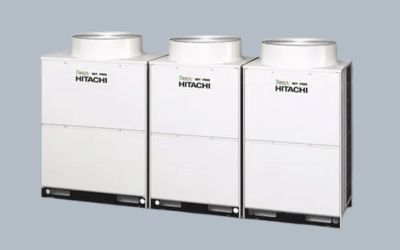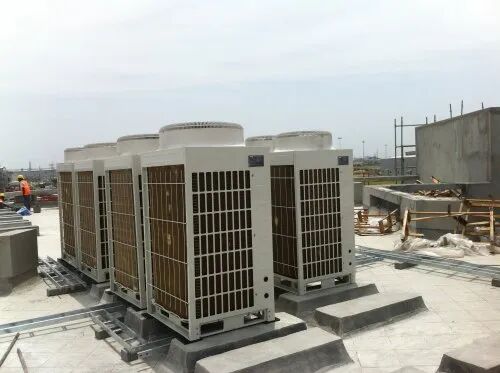Variable Refrigerant Flow ( VRF )
Variable Refrigerant Flow ( VRF )
A Variable Refrigerant Flow (VRF) Air Conditioning System is an advanced cooling and heating solution designed for commercial and large residential spaces. Unlike traditional air conditioning systems, VRF systems use a single outdoor unit connected to multiple indoor units, allowing precise temperature control in different zones. The system adjusts the refrigerant flow based on demand, improving energy efficiency and comfort.
Why Choose a VRF Air Conditioning ?
VRF systems are ideal for large buildings, offices, hotels, and high-end residences where efficient and customized climate control is needed. Here’s why you should consider a VRF system:
✔ Energy Efficient – Adjusts refrigerant flow to match cooling/heating demand.
✔ Individual Zone Control – Different rooms can have different temperature settings.
✔ Quiet Operation – Minimal noise compared to traditional AC systems.
✔ Compact & Flexible Design – Uses small ducts or ductless systems.
✔ Long Lifespan – Durable system with fewer mechanical issues.
✔ All-in-One Cooling & Heating – Works for both cooling in summer and heating in winter.

Advantages of VRF Air Conditioning
✅ High Energy Efficiency – Saves up to 50% energy compared to conventional AC systems.
✅ Precise Temperature Control – Custom cooling/heating for different rooms.
✅ Minimal Noise – Almost silent operation inside buildings.
✅ Flexible Installation – Compact outdoor units with various indoor unit options.
✅ Simultaneous Cooling & Heating – Can cool some rooms while heating others.
✅ Smart Automation – Can be controlled remotely using mobile apps and smart building management systems.
Disadvantages of VRF Air Conditioning
❌ Higher Initial Cost – Expensive to install compared to traditional split or window ACs.
❌ Complex Installation – Requires expert design and planning for proper setup.
❌ Requires Regular Maintenance – More components mean regular servicing is needed.
❌ Not Ideal for Small Homes – Best suited for large spaces rather than individual rooms.

Uses of VRF Air Conditioning
- Best for large commercial buildings, offices, and hotels
- Ideal for residential villas and luxury apartments
- Suitable for hospitals, educational institutions, and shopping malls
- Used in data centers and IT firms needing precise climate control
Specifications of VRF Air Conditioning
- Capacity Range: 8 HP to 88 HP (Horsepower), expandable based on need
- Compressor Type: Inverter-driven rotary or scroll compressor
- Cooling & Heating Technology: Simultaneous heating and cooling possible
- Refrigerant Type: Eco-friendly R410A / R32
- Zoning Control: Multiple indoor units connected to a single outdoor unit
- Energy Efficiency Rating (EER): 5-star efficiency with optimized refrigerant usage
- Indoor Unit Types: Cassette, ducted, ceiling-mounted, or wall-mounted
- Noise Level: Very low noise, ideal for offices and commercial spaces
- Additional Features: Smart controls, Wi-Fi connectivity, and automation compatibility
- Power Consumption: 30-50% less than traditional HVAC systems due to intelligent load management
How Much Does a VRF Air Conditioning Cost in Chennai?
The cost of a VRF air conditioning system in Chennai depends on the brand, capacity, and installation complexity. Below is an approximate price range:
🔹 Small VRF System (for apartments/offices) – ₹2,50,000 to ₹5,00,000
🔹 Medium VRF System (for hotels/villas) – ₹6,00,000 to ₹12,00,000
🔹 Large VRF System (for commercial buildings/malls) – ₹15,00,000 to ₹30,00,000
📌 Installation Charges: ₹50,000 to ₹2,00,000 (varies based on complexity)
📌 Annual Maintenance Cost: ₹10,000 to ₹50,000 (depending on system size and service contract)
Note: Prices may vary depending on the brand, seasonal offers, and specific requirements. It’s best to consult a VRF system expert in Chennai for a customized quote.
